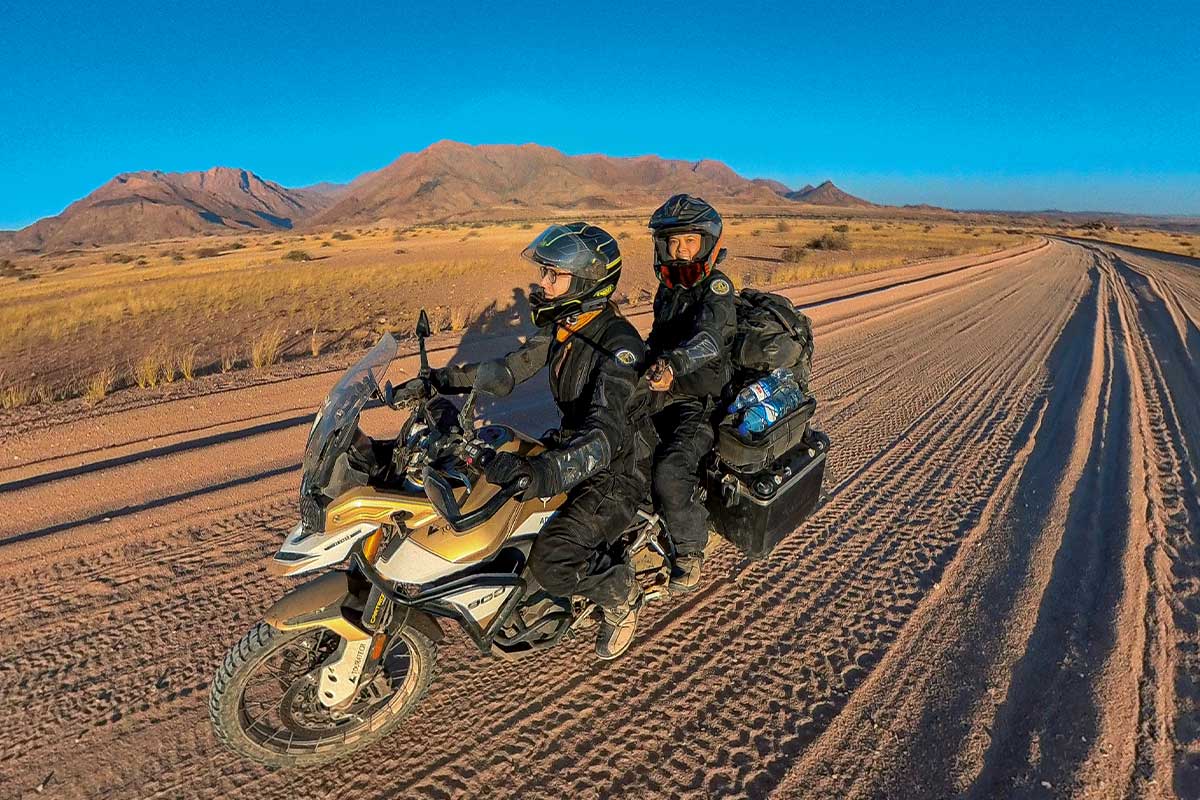After exhausting stages in Western and Central Africa, Sandra and Fiona of ADV Travelbug reach Namibia, which delights the two adventurers with driving challenges and unique landscapes.
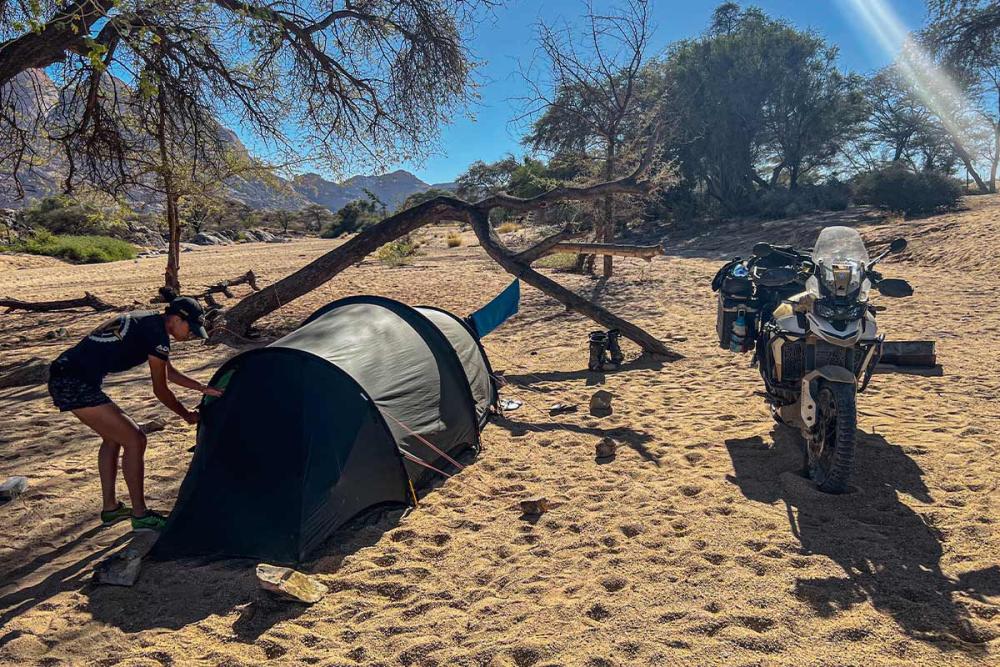
We enter Namibia from Angola via a tiny border crossing on the Kunene River. We had expected a relaxed two-hour drive to Ruacana, but instead a sandy track awaits us, which is quite a challenge for the two of us on one motorbike. Exhausted, we stop at the first campsite we can find. Bruno, the owner and a former Dakar participant, takes one look at our exhausted faces and immediately offers us a free tent with a comfortable mattress. After a long rest, we are now ready to explore Namibia. We choose the breathtaking Epupa Falls as our first destination, which means we have a fantastic route ahead of us. Only the Kunene River separates us from the beautiful green mountains of Angola. Bruno had assured us that the D3700 was one of the most spectacular roads in Namibia, but other travellers, who had just come from Epupa in an off-road car, warned us of taking that route. We decide that we will at least give it a try. And Bruno insists on accompanying us for the first 20 kilometres to make sure we can cope with the demands of the track.
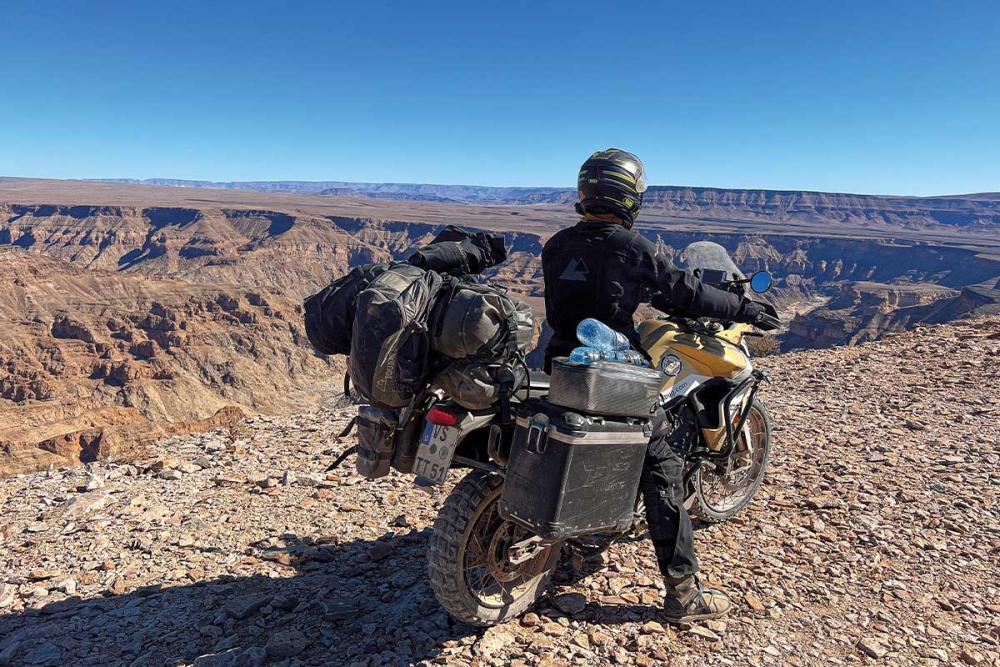
We follow the gravel road into the mountains, and after a few tight bends and a water crossing, Bruno is convinced that we will make it. Soon after saying goodbye, the route becomes more and more challenging. But the further we go, the less we think about turning back. The landscape is truly breathtaking and the track, even with its sandy sections, is manageable. What worries me, however, are the extreme slopes. At first, I ask Fiona to dismount when the slope is extreme, but we soon realise that it will take us forever to cover the distance this way. So we have to ride on with the two of us on the motorbike. Although I am completely out of my comfort zone as a rider, this route is something very special. And not just because of the picturesque landscape, but also because we drive through some remote villages where members of the Himba ethnic group live - an indigenous people known for their distinctive ochre-red body paint, ornate jewellery and unique hairstyles.
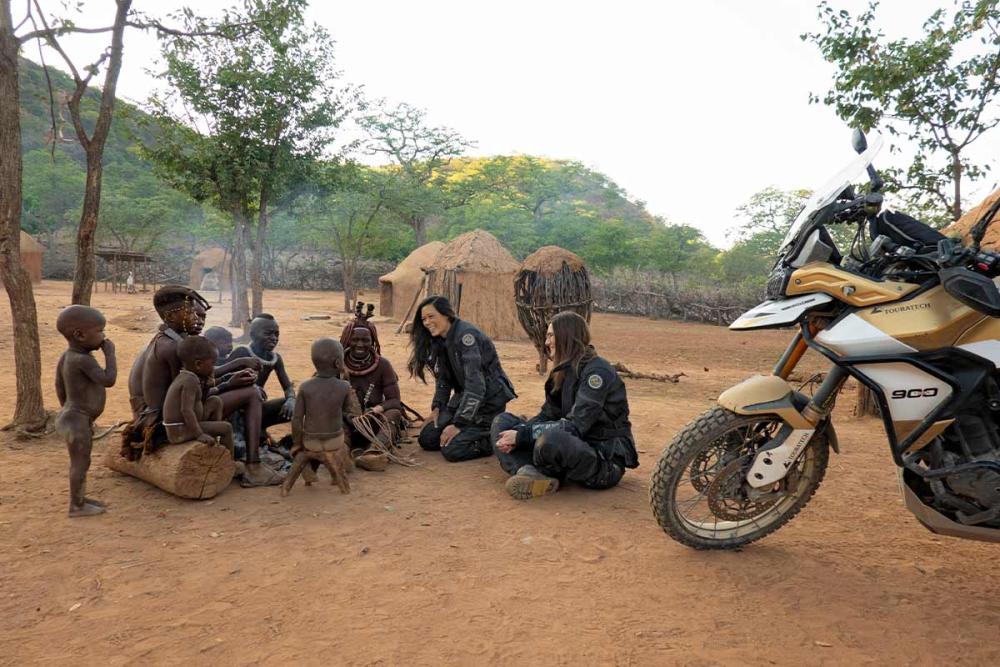
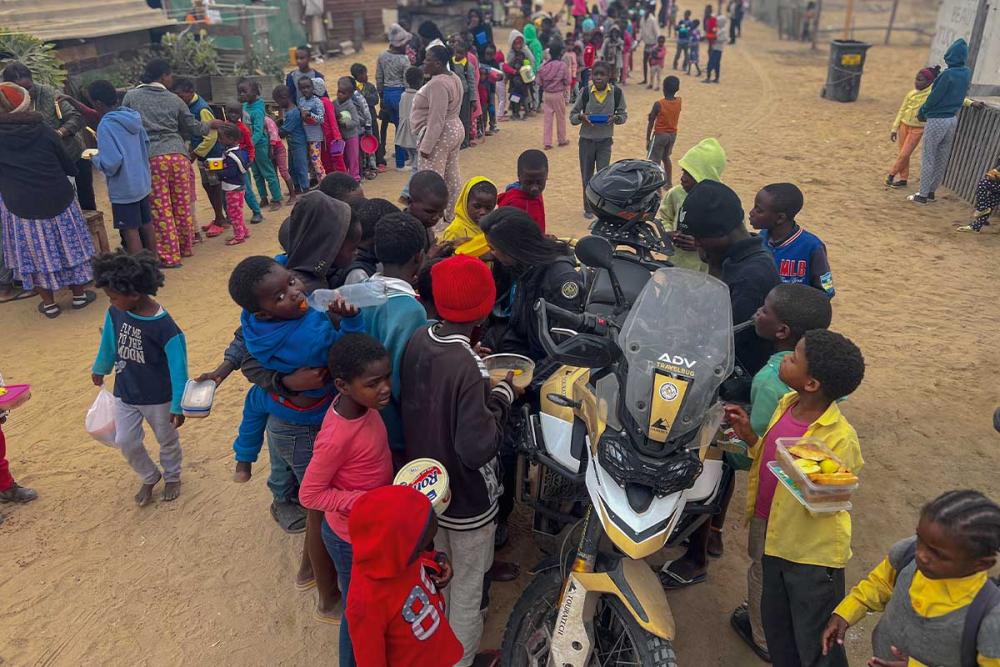
After many strenuous hours, spectacular views and some frightening steep ascents, we reach Epupa, where the Kunene River plunges into a 40-metre-deep gorge and forms a remarkable series of waterfalls. From here, the tracks are in better condition. They range from coarse gravel to dust and sand roads. Many sections are very undulating and, depending on when the roads were last levelled, driving becomes more or less relaxing. It will be a whole week before we get tarmac under our studs again at the edge of Etosha National Park. We park our Tiger there to change into an open safari vehicle and observe the animals.
After a few days' break, we drive straight into the mountains. The landscape soon becomes very rugged, with bright red rock formations rising above the desert. We camp for a few nights in Brandberg and Spitzkoppe and wake up to dramatic sunrises that bathe the granite rocks in a magical light. Now it's time to visit the coast, because we want to spend a few days on the beach. But around 20 kilometres from the coast, the climate changes from dry and hot to cloudy, windy and dull. Where the ice-cold Atlantic meets the Namib Desert, dense fog often forms. At first, we are disappointed, but then the cooler temperatures prove to be quite pleasant after all the off-road driving in the sweltering heat.
Swakopmund, a coastal town with German colonial architecture, is our starting point for further explorations. From here we visit the Skeleton Coast, also known as the largest ship graveyard in the world. It is a hostile but fascinating area. Although we are not allowed to camp inside the national park because of the wild animals, we manage to get a transit pass that allows us to drive through the park during the day. The coast, which stretches all the way to Angola, is practically uninhabited. Due to the cool weather and strong winds, we are glad when we can return to the shelter of the city after our day trip.
Next, we want to explore Sandwich Harbour, where gigantic sand dunes reach all the way to the Atlantic. It is forbidden to drive motorbikes through this protected area, so we have to take an off-road car. But there are endless dunes on the outskirts of the towns of Swakopmund and Walvis Bay, where we can hire KTMs and ride through the sand mountains all day. Further south, the Naukluft National Park delights us before we reach one of Namibia's greatest highlights via the Sesriem Canyon: The salt pans of Sossuslvei. Red dunes frame the evaporation area. In the middle of the white pan are the skeletons of trees that died thousands of years ago but are unable to decompose in the dry climate. A truly surreal landscape!
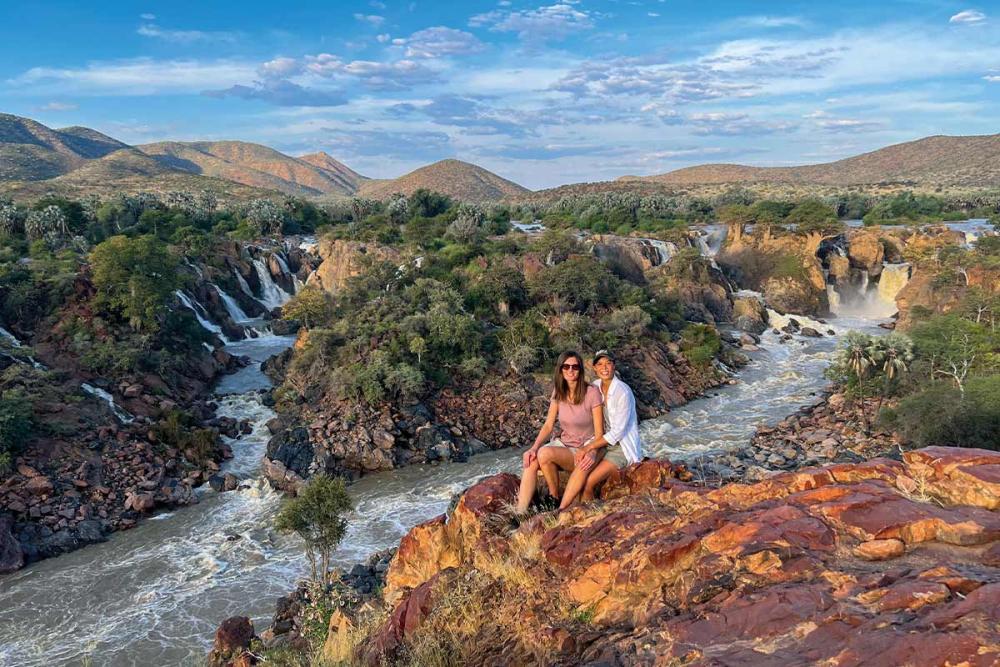
With the Fish River Canyon, we reach the second largest canyon in the world. With our Triumph Tiger 900 Rally Pro, we venture right to the edge and head for various lookout points along the canyon. We want to crown this unforgettable journey through Namibia with another highlight. We decide in favour of the route along the Orange River, which is lined with vineyards and hot springs. After an evening of good food and wine, we cross the border into South Africa.












